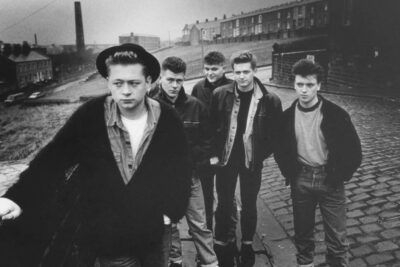
Photographer Phil Melia chats to Northern Life about life behind the lens
by Northern Life
When you see the beautiful landscape around the picturesque Dove Stone area of Saddleworth, you can see immediately why photographer Phil Melia set up his studio gallery here over ten years ago. The ambiance of the landscape and the historic old mill he is based in, is a perfect fit for Phil’s work style and ethos. Having spent his entire career being a successful commercial and industrial photographer, he is now gaining acclaim for his documentary and environmental portraiture. Phil chats to Northern Life about life behind the lens.
The massive turning point in my photography came in 2006 when I decided to study a Masters Degree in International Documentary, Travel and Photojournalism at The University of Bolton. I’d always admired the genre of documentary photography and the skill of visual storytelling but never really been able to study or pursue it due to my commercial and industrial photography commitments.
“The Photography MA was incredibly important to me on a number of levels. Firstly, it gave me a renewed sense of enthusiasm and passion. After spending a lifetime of working for business customers with uniquely challenging commercial and industrial photography assignments, the new challenge of working on longer term, deeper projects, involving research, planning, logistics, theory and storytelling was a new lease of life that was mentally stimulating.


“Secondly, I was learning and using new skills that were outside of my comfort zone. By succeeding in these challenges, I felt that I was growing immensely, not only as a documentary photographer, but it was also taking my commercial and industrial photography to a higher level.
“Finally, it had given me an exciting and new interest into the world of documentary portraiture and visual storytelling. I discovered a need and desire to use my photographic skills and experience to bear witness to the world we live in.”
As part of his MA, Phil worked on two major assignments, the first was ‘The Palio of Siena’ that saw him spend a week in Siena, Italy to complete a visual essay on the historic event that dates back to the 17th century. The second was ‘The Arandora Star’ that saw him research and photograph people whose lives were adversely affected by the internment of Italian men living in the UK and their subsequent deaths whilst being deported via a former cruise ship to an internment camp in Canada.
Since then he has gained the highest grade of qualification from The British Institute of Professional Photography, a Fellowship, for his self-published book, Brass and Glass that celebrates 165th Anniversary of The Boarshurst Silver Band from Greenfield, Saddleworth.
“As a photographer based in a small village in Saddleworth, you are acutely aware of the rich visual history and heritage of the area, as well as its culture and traditions. I’m always keen to not only engage with the local community in all of these aspects but also feel that it’s important to contribute and visually bear witness.
“With Brass and Glass, I felt that it was important to create a historical document for future generations. A visual story of the band at that particular moment in time, a record of who was in the band, what instrument they played, who the conductor was, who the trustees were. The fact that my local brass band is more or less the same age as photography is something that I still find astonishing when I think about it.
“I decided to shoot the entire project on a Leica M rangefinder camera. Whilst the camera is a modern digital camera, its design is based on the original Leica rangefinder launched in 1913. A large part of the camera and lenses I used were made of brass which I thought would be appropriate, hence the title of the book, Brass and Glass.
Images from Phil’s book, Brass and Glass, featuring the Boarhurst Silver Band





In May of this year one of Phil’s images was selected for publication into the book, Portrait of Humanity, published by Hoxton Press. The competition was run by 1854 Media, the owners of The British Journal of Photography and judged by the world renowned, Magnum Photography organisation. There were over 20,000 worldwide entrants, with only 1% being selected for the book.
“I feel immensely proud and humbled to be included in the book. There is some amazing photography in there from talented photographers from all over the world and to have my photography be accepted and judged by such an internationally respected organisation is incredible.”
Phil’s latest accomplishment is to be awarded a first and third place in regional awards for The British Institute of Professional Photography. The images were from a recent trip to Sichuan, China.

“I was commissioned to photograph a large machine at a factory in China for one of my international industrial customers. As it was a 10,000 mile round trip, it was an easy decision to extend my stay in China by a week to enjoy a photographic holiday and try to shoot some documentary projects.
“One of the projects I set myself was to create a collection of natural light portraits of seven randomly chosen strangers, in random locations, over the course of seven days. As all of my previous projects have been planned and researched in great detail, I thought it would be interesting to challenge the viewer to think about the subjects age, their life, their experiences, their careers, their families, their past, their futures, their environments without being told any of this information.”


As for the future, Phil has recently formed a new company with a couple of friends, to offer photographic holiday learning experiences, at inspiring locations around the world.
“Adventure Lumiere is a really exciting opportunity. Being a strong advocate of photographic education and having over 30 years of photography experience, I’m really looking forward to passing on my skills and knowledge to people who have a passion for photography, want to learn more and do so at an inspirational location anywhere in the world.”






